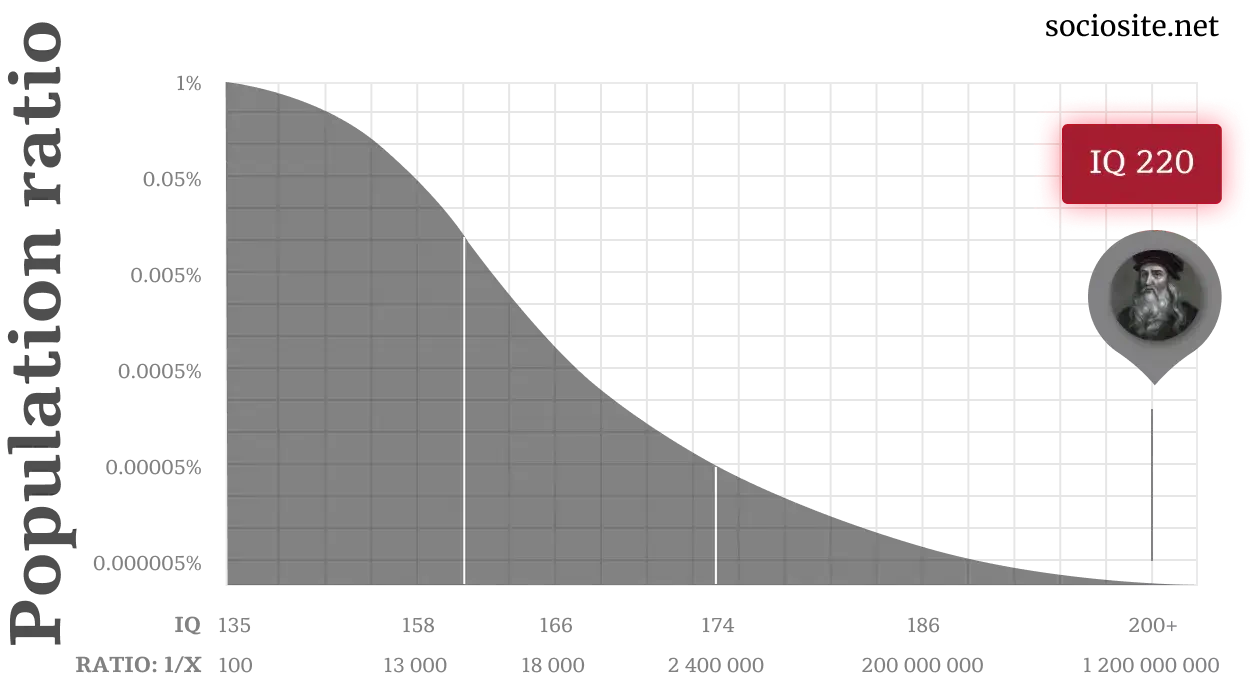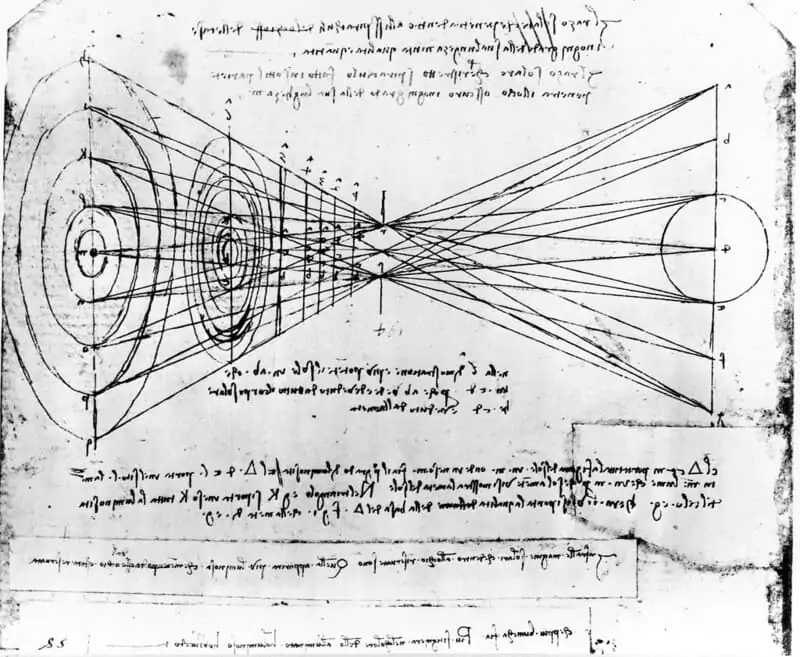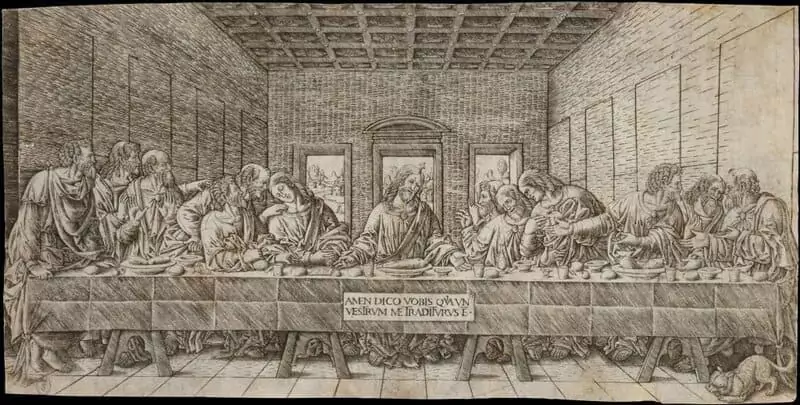Leonardo da Vinci
IQ 220
Leonardo da Vinci’s IQ is 220, which places him into the “Genius at a high level” group in the IQ category, corresponding to 0.000000001% of the world’s population.
I. What is Leonardo da Vinci's IQ?
Vinci’s IQ is one of a kind, as he might be the only person on the planet who can possess an IQ this high. Therefore, it can be said that in the population ratio chart, Vinci’s IQ is incomparable.

Da Vinci demonstrated his brilliance at an early age. He is regarded as one of the greatest painters of all time. Two of his works, the Mona Lisa and The Last Supper, are among the most famous paintings in history. Another masterwork painted by Da Vinci was the Virgin of the Rocks.
Vitruvian Man is recognized as a cultural icon among his drawings. Another of his well-known works is The Virgin and Child with St. Anne.
In terms of intelligence, Da Vinci was the greatest genius of all time. Leonardo da Vinci’s IQ is considered to be approximately 220. Leonardo was a superb artist and an open-minded scientist, but he was also a seductive and intelligent communicator with a light-hearted personality and appealing looks. He was a genius among geniuses.

Leonardo da Vinci - Italian Renaissance painter, sculptor, writer, scientist, architect and engineer. Venetian engraving of 16th century.1452-1519
Venetian engraving of 16th century.1452-1519
He was a genius: wildly inventive, intensely interested, and brilliant in many fields. His own drive and determination created Leonardo's talent.. Leonardo had no formal education and could hardly read Latin or do long division.
His intellect was of the sort that we can understand and learn from. It was founded on traits we might strive to develop in ourselves, such as curiosity and keen observation. He had an exuberant imagination that flirted with the margins of fantasy, which we might attempt to retain in ourselves and indulge in our children.
Leonardo understood how to combine observation and creativity, making him history's greatest inventor. "Anyone who conducts an argument by appealing to authority is not employing his mind; he is only using his memory," Da Vinci observed.
II. Leonardo da Vinci IQ - The greatest of All Time
Leonardo da Vinci was a painter, sculptor, architect, composer, mathematician, engineer, inventor, anatomist, geologist, geographer, botanist, and writer, among other things.
He is regarded as one of history's most acclaimed artists, as well as for his technological achievements such as flying aircraft, armored vehicles, concentrated solar power, and adding machines. Da Vinci, on the other hand, was a habitual procrastinator, and few of his concepts were actually fulfilled during his lifetime.
Leonardo was born to an illegitimate Tuscan family of potters and notaries. He might have migrated from Vinci to Florence, where his father worked for a number of wealthy families, including the Medici.
Leonardo purportedly trained with Florentine artist Verrocchio at the age of seventeen. Leonardo got an appreciation for Giotto's and Masaccio's talents here, and in 1472 he joined the painters' guild, Compagnia di San Luca.
Leonardo benefitted from the reign of Lorenzo de' Medici (the Magnificent) because of his familial links. Leonardo was entirely independent of Verrocchio by 1478, and he may have encountered the exiled Ludovico Sforza, the future Duke of Milan, around that time (Ludovico ruled as regent from 1481-94, before becoming Duke).
In 1482, Leonardo came to Milan with a silver lyre (which he may have been able to play), a present from the Florentine king, Lorenzo the Magnificent, for Ludovico Sforza. Ludovico aimed to make Milan a center of humanist study on par with Florence.
Leonardo thrived in this cerebral setting. He established a studio, earned several orders, taught pupils, and began to meticulously document his scientific and creative research in a series of notebooks. Leonardo da Vinci, the prototypical "renaissance man," was an unsurpassed painter, excellent architect, engineer, cartographer, and scientist (he was particularly interested in biology and physics).

He was influenced by Plato's Timaeus, Ptolemy's Cosmography, and Vitruvius' On Architecture, among other ancient literature. Leonardo is credited with assisting Luca Pacioli with his Divina Proportione dissertation (1509). Leonardo combined the practical and theoretical, designing several mechanical gadgets for war, including a submarine, and even experimenting with flight concepts.
Leonardo highlighted his accomplishments to the future Duke in a now-famous letter (possibly written in the early 1480s), emphasizing mostly on his ability as a military engineer.
The letter begins, "Having sufficiently studied and examined the experiments of all those who claim to be experts and inventors of war machines, and having discovered that their machines do not differ in the least from those ordinarily in use, I shall make so bold, without wishing to cause harm to anyone, as to address myself to Your Excellency and offer to demonstrate to him, at his pleasure, all the things briefly enumerated below."
Leonardo detailed the services he could provide in ten brief paragraphs, stating that he could build bridges, tunnels, fortifications, and "create siege cannons, mortars, and other devices, of beautiful and functional shape, wholly distinct from what is commonly in use." What may surprise us is that Leonardo does not discuss art until the very last line, and he does it so modestly!
A painting by Leonardo da Vinci sold at Christie's for $450.3 million, by far the greatest price for any work of art sold at auction—and a testament to the great Italian artist's place in our imagination.
The epithet "genius" is now used to characterize music artists, stand-up comedians, and even football players. But, as Walter Isaacson reveals in his richly illustrated new biography, Leonardo da Vinci earned the title.
Leonardo merged science and art to produce works that have become part of humanity's story, from renowned paintings like "Mona Lisa" and "The Last Supper" to ideas for flying aircraft and groundbreaking research on optics and perspective.
The Mona Lisa's grin is the result of a lifetime spent studying art, physics, optics, and every other subject that piqued his interest, including comprehending the cosmos and our place in it.

His other most well-known work is "The Last Supper", which you describe as "the most spellbinding narrative picture in history." Take us behind the scenes of its construction and explain why it is such a magnificent work of art.
The Duke of Milan commissioned him to paint it on the wall of a monastery's dining hall. Leonardo, unlike other paintings of "The Last Supper", of which there were hundreds at the period, does not just capture a moment. He realizes that there is no such thing as a detached moment in time. Because it is in motion, he writes, each instant embodies what has occurred before and behind it.
Despite these accomplishments, Leonardo was most renowned in his day not as a painter, but as an architect—and even as a special effects artist. Unbraid the various strands of his existence.
Despite his best efforts, he was primarily a painter. He saw himself as an engineer and architect, which he also accomplished with zeal. His first work, though, was as a theater producer.
Because the stage of a theater recedes faster and seems deeper than it is, he learned how to execute perspective tricks. Even a table onstage might be angled slightly so that it could be seen, like in "The Last Supper." Similarly, on stage, the theatrical motions of the figures would be accentuated, as seen in "The Last Supper".
In some of his theatrical productions, he used mechanical props such as flying machines and a helicopter screw to send angels down from the rafters. Leonardo then merged fiction and reality by attempting to build genuine flying aircraft that were technical wonders!
Leonardo's distinguishing characteristic is his interest in everything, and not just for the sake of curiosity. It's how he pushed himself to become a genius. But we may all attempt to emulate and learn from Leonardo's curiosity.
WHAT IS YOUR IQ?
This IQ Test will help you test your IQ accurately
IQ Comparison with other Celebrities:
Leonardo da Vinci
IQ 220
vs
IQ comparison with Leonardo da Vinci
Maybe you are interested
